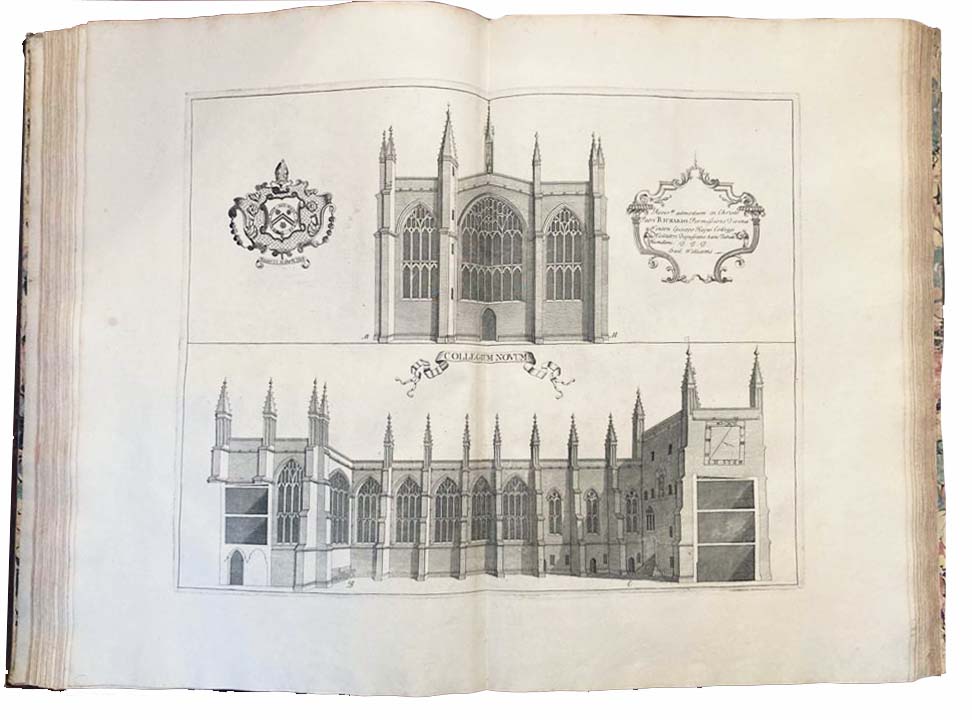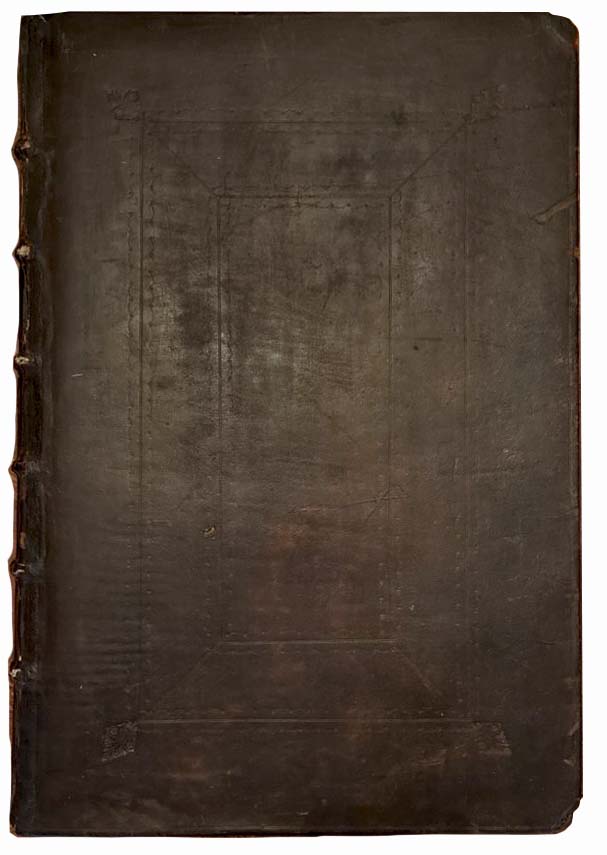WILLIAMS, William.
FINE OXFORD ENGRAVINGS
Oxonia depicta sive collegiorum et aularum […] delineatio.
Oxford, published by the Author, 1732-33.£27,500.00
FIRST EDITION. Large folio. 68 engraved ll. of plates. Engraved architectural title with Oxford in the background, 66 double-page engraved copperplates of Oxford views and college buildings, including 1 extra-large of the Bodleian (folding), engraved index with list of subscribers and corrective editorial ms slip. Extreme lower outer blank corner of pl.27 repaired, dedication plate pl.65 on thicker paper. A fine copy, crisp and clean, in contemporary English calf, double blind ruled to a panel design, blind rolls with gouges, blind roll with tendrils along joints, blind-stamped fleurons to corners, spine gilt, gilt-lettered morocco label, marbled eps, all edges sprinkled red, joints restored, corners worn, neoclassical engraved bookplate with monogram RW to ffep verso, ms ‘a+m+q’ (binder’s instructions) to rear ep.
A fine copy, in very fresh, clean impression, of the first edition of this famous, monumental and richly illustrated collection of views of Oxford and its colleges, by the little-known Welsh engraver William Williams (fl.1724-33). Intended as an update to David Loggan’s ‘Oxonia illustrata’ (1675), it is a rare instance of the rolling press machine of Oxford University being used to print a purely illustrated book (Gadd, p.21). The 60 years that separate Loggan’s and Williams’s works were a period of great architectural change at the University, beginning with the construction of the ‘Old Ashmolean’, near the Sheldonian (Tyack, p.127). ‘The colleges soon followed the University’s lead in commissioning new buildings. […] while the overall numbers [of students] fell, the average wealth of the students increased. By 1700 only about a quarter of the undergraduates were being recruited from outside the gentry and aristocracy. [These] gentlemen commoners baulked at the idea of sharing rooms […]; instead they demanded a set of at least two rooms. […] The changing social composition of the colleges brought about fundamental changes in architecture and layout’, with increasing interest in classicism (Tyack, pp.129-31). ‘Oxonia depicta’ begins with a southern and eastern view of the city, a reproduction of the Agas map (1578), a very detailed plan of the university, a majestic extra-large folding plate of the Bodleian buildings, with the heraldry of illustrious people (e.g., John Selden and Kenelm Digby) and a long file of students and officers in academic dress, a couple more copperplates devoted to the Bodleian’s interiors, and a plan of the Botanic Gardens. The remainder are devoted to the façades, plans, courtyards and gardens of colleges, with small cartouches with dedications to important alumni featured in the subscribers’ list. One plate is devoted to the chapel of Trinity College and All Souls, another to the handsome garden of St John’s College. The subscribers’ list encompasses Cambridge colleges, Eton School, a dozen earls and a few dukes, including Buckingham.
Columbia, NYPL, Stanford and LC recorded in the US. Brunet V, 1455; ESTC N72326; Upcott III, p.1107; Lowndes II, 1954. Not in Fowler. History of Oxford University Press: Volume I, ed. I. Gadd et al. (2013); G. Tyack, Oxford: An Architectural Guide (1998).In stock









